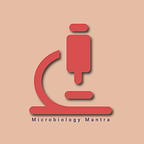How to Perform Preservative Efficacy Test?
Introduction
Preservatives are chemical substances that are added to pharmaceutical preparations to prevent or limit microbial contamination. If pharmaceutical preparations themselves are not antimicrobial in nature, antimicrobial preservatives can be added during the formulation. Depending on the type of product, one or more preservatives can be added. Preservatives must be added particularly to multidose pharmaceutical preparations as they are exposed multiple times during their shelf-life. While choosing the preservative for a particular product, it is important to consider its compatibility with other components of the product and packaging materials. Pharmaceuticals are not the only industry that use preservatives. Preservatives are also used in the food and cosmetic industries. However, the addition of preservatives does not encourage compromising good manufacturing practices.
The preservative efficacy test is also known as the antimicrobial effectiveness test. The test determines the antimicrobial activity of a product and evaluates how effectively the product withstands microbial contamination during usage. The antimicrobial activity of a product in its final container shall be investigated throughout its shelf-life.
The test comprises of inoculation of a certain number of microorganisms into the product. Storing the inoculated product at a specified temperature. Withdrawing the sample at specified time intervals. And counting the microorganisms in the withdrawn sample.
